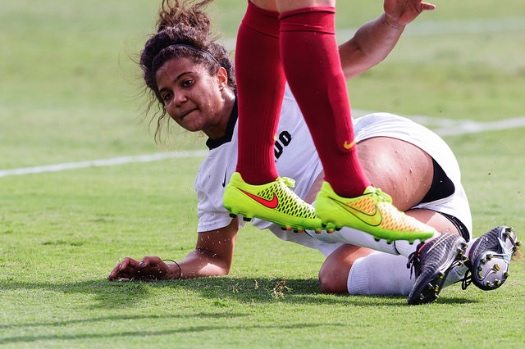
May 6, 2017; New York Times
For all who reside in Michigan, there is a choice to make: maize and blue or green and white. College sports, predominately from the University of Michigan or Michigan State University, are a way of life. As a significant moneymaker for the universities, the athletic programs are given top-of-the-line facilities, equipment, and resources. At the University of Michigan alone, a $168 million complex is currently under construction for the men’s and women’s lacrosse teams. The field hockey team is playing in a $13.5 million complex. Michigan Stadium, home of the increasingly popular football team, recently had a $226 million renovation.
The University of Michigan’s women’s club ice hockey team, however, pays to participate in their sport. They receive no support from the athletic department, pay $1,600 per year to play plus $20,000 to rent ice time at Yost Ice Area, and need to fundraise for their own equipment. In fact, this team is not even recognized as a varsity team. The question becomes, “Why does this team get less recognition and no support from the university’s $160 million annual athletic budget?”
According to the federal law known as Title IX, a varsity female ice hockey player must receive the same protective equipment that a varsity male ice hockey player would receive, inasmuch as the protective equipment is the same. For this to take place, however, the University of Michigan would need to add women’s hockey as a varsity sport. If that took place, the university would also need to add a men’s sport or cut a women’s team to keep the number of male and female athletes even under Title IX guidelines.
According to the Women’s Sport Foundation,
Sign up for our free newsletters
Subscribe to NPQ's newsletters to have our top stories delivered directly to your inbox.
By signing up, you agree to our privacy policy and terms of use, and to receive messages from NPQ and our partners.
- Even though female students make up 57 percent of college student populations, female athletes received only 43 percent of participation opportunities at NCAA schools, which is 63,241 fewer participation opportunities than their male counterparts.
- Although the gap has narrowed, male athletes still receive 55 percent of NCAA college athletic scholarship dollars (NCAA-designated Division I and II institutions), leaving only 45 percent allocated to women.
- When examining median expenses per NCAA Division I institution, women’s teams receive only 40 percent of college sport operating dollars and 36 percent of college athletic team recruitment spending.
- Median head coaches’ salaries at NCAA Division I-FBS schools are $3,430,000 for men’s teams and $1,172,400 for women’s teams. This is a difference of $2,257,600.
Even with this information, it all comes down to numbers, and most women’s sports do not generate enough revenue for a college athletic department to be able to sustain the cost of maintaining a team. At the University of North Dakota, the women’s varsity team costs $2 million per year. According to the university’s president, $60 million would need to be raised to endow the program. Ticket and merchandise sales for the sport would not come close to reaching the $2 million annual operating cost, much less contributing to funding an endowment.
The difference does not stop at collegiate sports, however. Professionally, women’s sports still fall behind men’s in popularity. The three-time WNBA Champions (2003, 2006, 2008), the Detroit Shock, couldn’t sustain a viable following up against the Detroit Pistons, who won the 2004 NBA Championship, and were moved to Tulsa, Oklahoma in 2009. Detroit currently has no dominant professional women’s athletic team.
So, why is there less exposure and support for women’s sports? According to an article in the Economist, sponsors are unwilling to finance individuals and teams that do not have good media exposure: “The Women’s Sport and Fitness Foundation (WSFF) estimates that in 2013, women’s sports received 7 percent of coverage and 0.4 percent of the total value of commercial sponsorships.” This makes for a cycle that is difficult to overcome—less coverage equals less sponsorship, which equals less coverage.
In March 2016, CNN reported that a poll conducted by Always indicated that, “a significant percentage of both women and men said men are better at sports, with 32 percent of women feeling that way and 47 percent of men.” While this could be one explanation, Nancy Hogshead-Makar, a three-time Olympic gold medalist in swimming, who has devoted her career to the advancement of girls and women in sports, states, “This connection with sports and masculinity is a very tough nut to crack. People have been trying to crack it for a long time.”
While a simple explanation or solution to the gender inequalities in sport isn’t easily produced, identification that there are gaps in recognition and support may be the first step. Mercedes Reyes, a junior forward with the University of Michigan women’s club hockey team, may have said it best—“It would just be nice so that people know we exist.”—Erin Shankie













